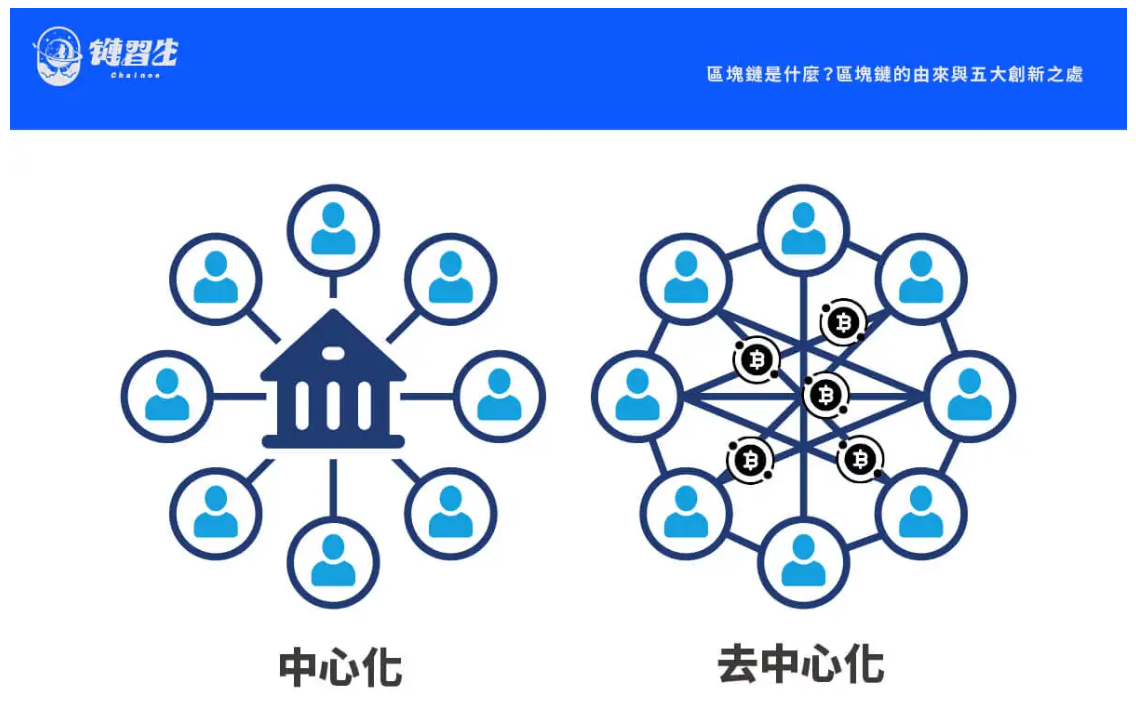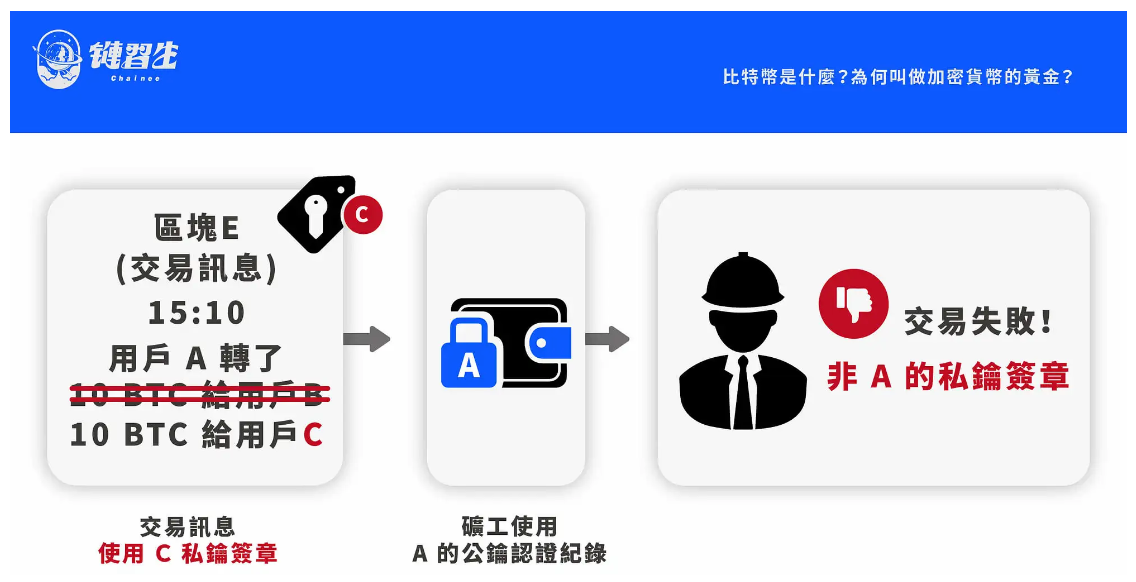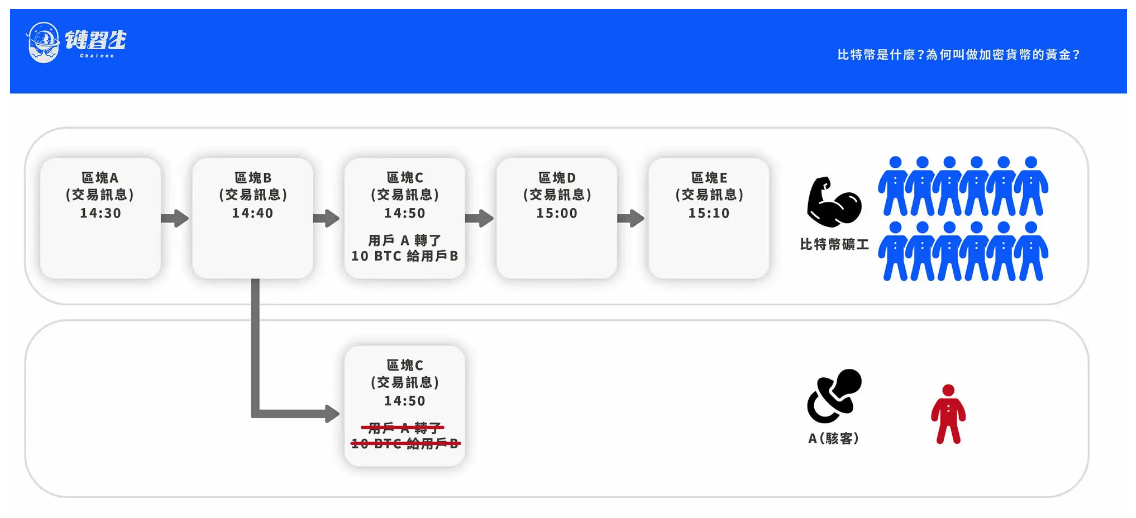
https://linktr.ee/penfarming 金融職人|文案編輯|雜食性閱讀者|Heptabase 愛用者 🌐 區塊鏈科普網站【鏈習生】專欄作家 🗞️ 電子報【創作者經濟IMO】主編 👤 臉書專頁【閱讀筆耕】
Reading Bigeng|What is Bitcoin? The origin, operation and characteristics of Bitcoin
This article is excerpted from the popular blockchain science website "Chainee" What is Bitcoin? Why is it called “digital gold”? In the article How Bitcoin, the King of Cryptocurrencies, works , let’s talk about what Bitcoin is? The origin, operation and characteristics of Bitcoin.

👉Collect the Writing NFT version of this article👈
■ What is Bitcoin?
Bitcoin has two meanings. One refers to the "coin" itself as a cryptocurrency, and the other refers to the blockchain network that supports the entire transaction system. To better distinguish between the two meanings, we usually use the term "Bitcoin" when referring to cryptocurrencies, and "Bitcoin blockchain" when referring to blockchain networks. Or "Bitcoin Protocol" (Bitcoin Protocol) to represent.
"Bitcoin" is the world's largest cryptocurrency and has the title of "King of Ten Thousand Coins" . This is not only in terms of market value, but also in terms of its popularity and appeal. After more than ten years of development, Bitcoin’s status among consumers, financial institutions, enterprises and governments has gradually gained recognition. Different from physical currency, Bitcoin transfers funds through blockchain network transmission.
"Bitcoin Protocol" is an electronic transaction system driven by blockchain technology, which can be understood as a transfer system . It’s just that what is transferred within the system is not New Taiwan dollars or US dollars, but “Bitcoin”. In addition, the transfer system has no operator, no intermediary agency, and no bank as a "center". Instead, it is jointly operated by more than 10,000 netizens around the world who do not know each other - Bitcoin miners - and is "decentralized".

Further reading: What is cryptocurrency? What is virtual currency? An article exploring the characteristics and types of cryptocurrency
■ Origin of Bitcoin
In September 2008 , the financial tsunami triggered by the "subprime mortgage" in the United States swept the world. The collapse of Lehman Brothers, the fourth largest investment bank in the United States, with $613 billion in bad debts not only announced the onset of the global financial crisis, but also had a negative impact on the government and financial institutions. Institutional distrust is also spreading among the public.
On October 31 of the same year , a mysterious person with the pseudonym "Satoshi Nakamoto" published a 9-page article titled "Bitcoin, A Peer-to-Peer Electronic Cash System" (Bitcoin, A Peer- to-Peer Electronic Cash System). This was what became the famous “Bitcoin White Paper” and was the first time the word Bitcoin appeared in people’s sights.
Satoshi Nakamoto's paper did not mention the word "Blockchain", which was what later generations concluded when defining how Bitcoin implements this electronic cash system - which can be understood as a transfer system. a technology. In fact, Satoshi Nakamoto did not create this idea out of thin air and solely relied on his own efforts to complete this great idea that has shaken people's deep-rooted financial and monetary views for decades. Instead, it integrated the concepts of the predecessors. Under the conditions of favorable weather (financial distrust), geographical location (network construction), and people (developer support), Satoshi Nakamoto mined the Bitcoin on January 3, 2009 . ) produced the first block in history, which is the Genesis block of Bitcoin, and also announced the official launch of the Bitcoin blockchain network.
■ How does Bitcoin work?
In the previous article introducing blockchain , we used the "Bitcoin blockchain" as an example to demonstrate how "A pays 10 Bitcoins to B" operates on the Bitcoin blockchain. The excerpt is as follows :
When A initiates a transaction, this transaction record will be automatically broadcast to the blockchain, notifying "A paid 10 Bitcoins to B" to let the miners of the Bitcoin blockchain know. At this time, miners will use their computer resources to verify the authenticity of the transaction. If the verification is successful, the transaction record will be written into a new block and become part of the Bitcoin blockchain. The first person to successfully verify and write this new block will receive a certain amount of Bitcoin in return.
At that time, I left three questions for everyone. Now we're going to explore these details one by one:
- How do blockchain miners verify transaction records?
- How is it decided which miner will write a new block?
- What prevents hackers from tampering with blockchain records?

Q1 How do miners verify transaction records?
Digital Signature
According to the previous example, A paid 10 Bitcoins to B. How did the miners verify this transaction record? Things are not too complicated. Miners only need to confirm one link to know the authenticity of the transaction, that is, "whether this transaction was initiated by A himself."
To understand this, we must first know the relationship between the "private key, public key and address" of the wallet. In the blockchain world, cryptocurrency wallets are equivalent to our bank accounts in real life, and each wallet has the following components:
- Private key <br class="smart">Bank account seal (kept privately, known only to you).
- Public key <br class="smart">Tool for decrypting seals (open and transparent, everyone can know).
- Address <br class="smart">Bank account number.
Going back to the example, the entire process is roughly as follows:
A sent 10 Bitcoins from his wallet to B's wallet address, and used A's own private key to digitally sign the transaction record (Digital Signature), which is an electronic signature and encryption mechanism.
When miners want to verify the authenticity of the transaction, they will use the public key provided by A to check to see if it is the transaction initiated by A and whether it was signed by A using the "seal" to know the transaction. authenticity. If the verification is correct, the transaction will be established and written into the block.

At this time, if a C appears and decrypts the transaction and tamper with the content, it will be because C does not have A’s private key to re-sign, so when others use A’s public key to confirm, there will be a situation where miners cannot verify it. They will reject the deal.

It can be seen from the above that in the decentralized financial world, the private key is the only basis for controlling the wallet. Losing the private key means losing control of the wallet, so it is very important to keep the private key properly.
Not Your Keys, Not Your Coins. It's That Simple.
*
Q2 How do you decide who will write a new block?
Proof of Work
The Bitcoin blockchain uses a consensus mechanism called Proof of Work (PoW) to determine which miner writes the block and gets the reward.
To briefly describe, after miners use their public keys to verify all transactions, each miner who wants to write a blockchain must contribute his or her computer resources to solve a difficult mathematical problem. The characteristic of this mathematical problem is that there is no For any shortcut, miners have to make steel using local methods and use computer computing power to try one possibility after another (try and error) to find the correct answer; and the first miner to find the correct answer will be eligible after completing the "proof of work" Create a new block, perform packaging and accounting matters, and obtain a new batch of issued Bitcoins as rewards.
Obtaining newly issued coins is like obtaining newly unearthed mineral deposits, so the above process is called "mining". Because of the design of the math problem itself, the more computer resources there are, the stronger the mining power is, and the higher the chance of solving the problem and creating a new block.
*
Q3 What prevents the possibility of tampering with records?
The Longest Chain Rule
In the rules of the Bitcoin blockchain, in order to prevent someone from tampering with records, there is "The Longest Chain Rule" (The Longest Chain Rule). This means that in the process of writing a blockchain, miners will always look for the longest chain to continue extending the block. How exactly does this principle work?
Continuing to use the previous example, when the transaction record "A paid 10 Bitcoins to B" was written on the blockchain by the miners, A regretted it (no longer wanted to pay), so he hired a hacker to record the transaction. delete. Then he must create a branch chain before the block that records "A paid 10 Bitcoins to B" and start creating blocks backwards.

However, because of the "longest chain principle", other Bitcoin miners in the world will continue to extend the longest chain (that is, the most original one). Unless A can continuously create new blocks on his own to make his chain the longest - he must defeat the combined computer computing resources of all miners, which means he controls 51% of the computing power - Otherwise A will never succeed. Therefore, the "longest chain principle" limits the possibility of deleting or tampering with transaction records.
What if A controls more than 51% of the world's computing power to tamper with records?
If A really has the ability to manipulate such huge computing resources, it is really not cost-effective just to change a transaction record. Based on economic incentives , using resources for mining will make more money. In this way, A also joins the ranks of miners, which in turn consolidates the security of the blockchain network.
Read full 👉What is Bitcoin? Why is it called “digital gold”? How Bitcoin, the King of Cryptocurrencies, Works
👉Collect the Writing NFT version of this article👈

🌱 Join [ Zhongshu Nervous System ] Wailuo👇
The special topics #Reflections on Writing and #热内真情are being serialized.
🌱 I appear on other platforms 👇
【 Facbook | Twitter | Liker Social | Matters | Medium | vocabulary 】
🌱 My teaching materials and invitation links 👇
≣Register noise.cash | Become a "noise coffee" and experience social finance together .
≣Register Presearch | Search to earn three birds with one stone .
≣Register for MEXC | Go to the Matcha Exchange to redeem OSMO and play wool .
≣Register Potato | Learn three things from Potato Media .
Like my work?
Don't forget to support or like, so I know you are with me..

中書神經系統

1. 關注各種有關書的消息。 2. 長文:專題 #寫作的反思 與 #爐內真心話 連載中。 3. 短文:每日「鏈習生幣圈日報」新聞的盤後觀點 murmur 眾聊。
Comment…